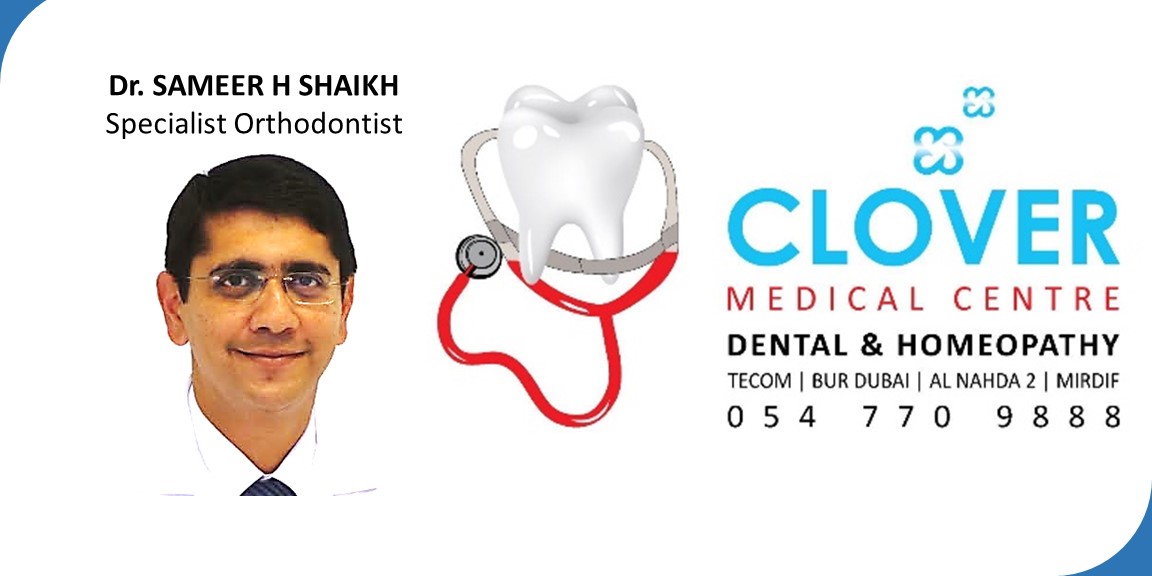Children Braces
Typically, according to existing international protocol, a child should be examined by an orthodontist at the age of 8 years. Early intervention with braces has helped in providing for better results with a reduced dependency on future extractions by maximizing the effects of growth modulation. In children, orthodontic treatment is done in 2 phases or sometimes in a single phase. This is dependent on the age of the patient and the severity of the problem. An experienced orthodontist would be adept at providing you with the required information at the initial consultation.
Phase 1 Treatment normally deals with the elimination of deleterious oral habits such as thumb-sucking, tongue thrusting etc, the correction of jaw discrepancies and the retraction of the upper front teeth to create a harmonious bite which results in a protected occlusion. (current orthodontic trends)
Phase 2 is usually undertaken following the eruption of all the permanent teeth and is aimed at creating a fabulous smile with a good occlusion and a harmonious soft tissue profile.
CURRENT ORTHODONTIC TRENDS
Dr Sameer Shaikh had trained in the Orthodontic Department of College of Dental Surgery, Manipal. This college has been a pillar in forward thinking in training of post-graduate Orthodontics in India. The Orthodontic Department had its grounding in the Edgewise School of Thought which is the format followed in the United States. Following an intensive training in CODS, Manipal where Dr Shaikh was also involved in the lecturing for under-graduate students, he spent 4 years acquiring further clinical skills from prominent & experienced professional orthodontists and also spent a significant amount of time lecturing in Dr D. Y Patil Dental College, Navi Mumbai. Dr Shaikh attributes almost all his diagnostic acumen, basic orthodontic skills and practice methodology to his mentor – Dr M. K. Prakash. The latter has been a pioneer in orthodontic education in India since the inception of Orthodontics. He has been in the profession for close to 5 decades. At present, Dr Shaikh has his primary focus on the following:1. Straight Wire Appliances
Conventionally, these are called as “braces”. We use 0.022 “ Pre-Adjusted Edgewise Appliances with an MBT Prescription. These could be in Stainless Steel or Ceramic. A majority of orthodontic cases can be treated by these braces alone. The high predictability of treatment results, ease if use, comfort for the patient and aesthetics of the device makes this appliance the most commonly used system in the world. This aids in the easy transfer of cases in case the patient has to abruptly migrate or to continue the treatment of other patients with orthodontic braces and new to Dubai .2. Lingual Braces
The high influx of adults seeking orthodontic treatment has resulted in the increase in popularity of this system. Most adults seek correction of their teeth but are reluctant to have visible braces on their teeth. Lingual braces provide the appropriate foil to address these cases. These braces are applied from the back of the teeth (lingual surface), effectively, making them “invisible”. Technological advancements in the last two decades have made them more practical to use in the clinical practice with a significant reduction in treatment time, cost and patient discomfort.3. Invisalign
Another instrument in the present day armamentarium for the progressive orthodontist is the availability of “Invisalign” or its derivatives. This system involves the use of a series of customized plastic vacuum-formed trays which fit on the teeth of the patients to provide an almost “invisible” appearance. Regular replacements of these trays with mild modifications will provide excellent results in mild to moderate orthodontic cases. Severe cases can be treated with Invisalign but this will involve the proximal grinding of vital tooth material. (Dr Shaikh does not favour the reduction of healthy tooth material and will not prescribe this to difficult cases)4. Early Orthodontics
Dr Shaikh is an ardent advocate of early orthodontic intervention. Conventionally, the trend for starting orthodontic treatment had been for the complete eruption of all permanent teeth at the age of 12 years and more. A lot of orthodontist had been trained in this method. The major drawbacks of this method were the high amount of extractions being done to achieve results and the poor profile evident post treatment. Early orthodontic treatment involves seeing the child at 8 – 9 years of age or when the upper permanent incisors have erupted. A trained orthodontist would be able to predict developing anomalies at this early age itself. Early Orthodontics involves a 2 phase approach to developing malocclusions.Phase 1
This is initiated when the orthodontist diagnoses malocclusions which are developing and can include but are not limited to:Increased Overjets – Major Protrusion of the upper anterior teeth
Deep Anterior Overbite – Excessive coverage of the lower anterior teeth by the upper
Anterior teeth
Deleterious Habits – Thumb – Sucking, Tongue – Thrusting etc
Cross – Bites – When the lower teeth overlap the upper teeth
5. Micro-Implant Assisted Orthodontics
In the last decade, the use of micro-implants in conjunction with conventional braces has gained momentum. This advent has provided a very valuable auxiliary in the orthodontic armamentarium to ensure even better results. Micro-implants are 6 – 8 mm titanium inserts/screws which are temporarily inserted into the bone in the vicinity of the teeth to provide better anchorage (support) for the delivery of orthodontic forces without depending singularly on the teeth for support. Intrusion of teeth, which has traditionally been very difficult, is made easier with the use micro-implants and a host of cases which could not be treated in the past can be addressed to today.6. Self-Ligating Brackets – Damon System
A new trend in orthodontics is the use of self-ligating brackets. This involves the use of specially designed brackets which allow the orthodontist to maintain the archwires within the bracket by means of specially designed sliding locks.The advantage of these systems is:
1. Ease of use
2. Enhanced tolerance by the patient due to fewer sharper edges
3. Reduced active treatment time and chair time
4. Lesser transmitted forces resulting in more comfort
5. Reduced dependency on extractions with a fuller smile
6. Easier to keep the braces clean due to lack of use of elastic ligatures.
The most popular device used globally is the Damon System. Traditional braces on the left are tied in with elastics, which cause friction and pressure, making treatment slower and less comfortable. Damon braces use a slide mechanism to hold the wire, which allows teeth to move more freely, quickly and comfortably. The Damon System is also available in a clear prescription allowing for a near invisible appearance. Damon smiles are full, natural 10-tooth smiles achieved with light biologically-sensible forces, and are specifically designed to improve the overall facial result of each patient.

